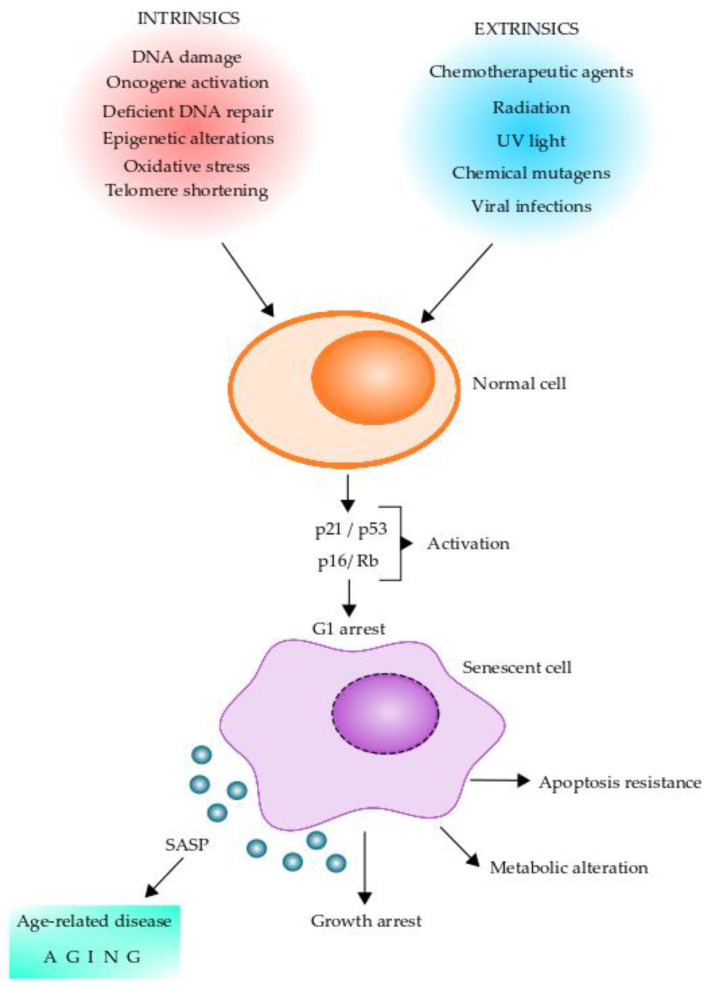Figure 2.
Stress stimuli leading to cellular senescence. Senescent cells can play pleiotropic roles in normal physiology, pathology, and aging. Diverse factors (intrinsic and extrinsic) can act on normal cells and induce a senescent phenotype. Senescent cells initiate the senescent cellular program by activating the p16/Rb and/or p21/p53 tumor suppressor pathways, which can arrest the cells in G1. Senescent cells undergo several intracellular changes, which are shown in the figure. One of the main features of senescent cells is the production of the senescence-associated secretory phenotype (SASP), which contains a series of molecules that can alter neighboring cells leading to age-related diseases and aging. Intracellular changes of senescent cells include DNA-SCARS (DNA segments with chromatin alterations reinforcing senescence), CCF (cytoplasm chromatin fragments), SADF (senescent-associated DNA damaged foci), SAHF (senescent-associated chromatin foci), SAMD (senescent-associated mitochondrial dysfunction), mtDNA (mitochondrial DNA), and TAF (telomere-associated foci).

